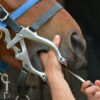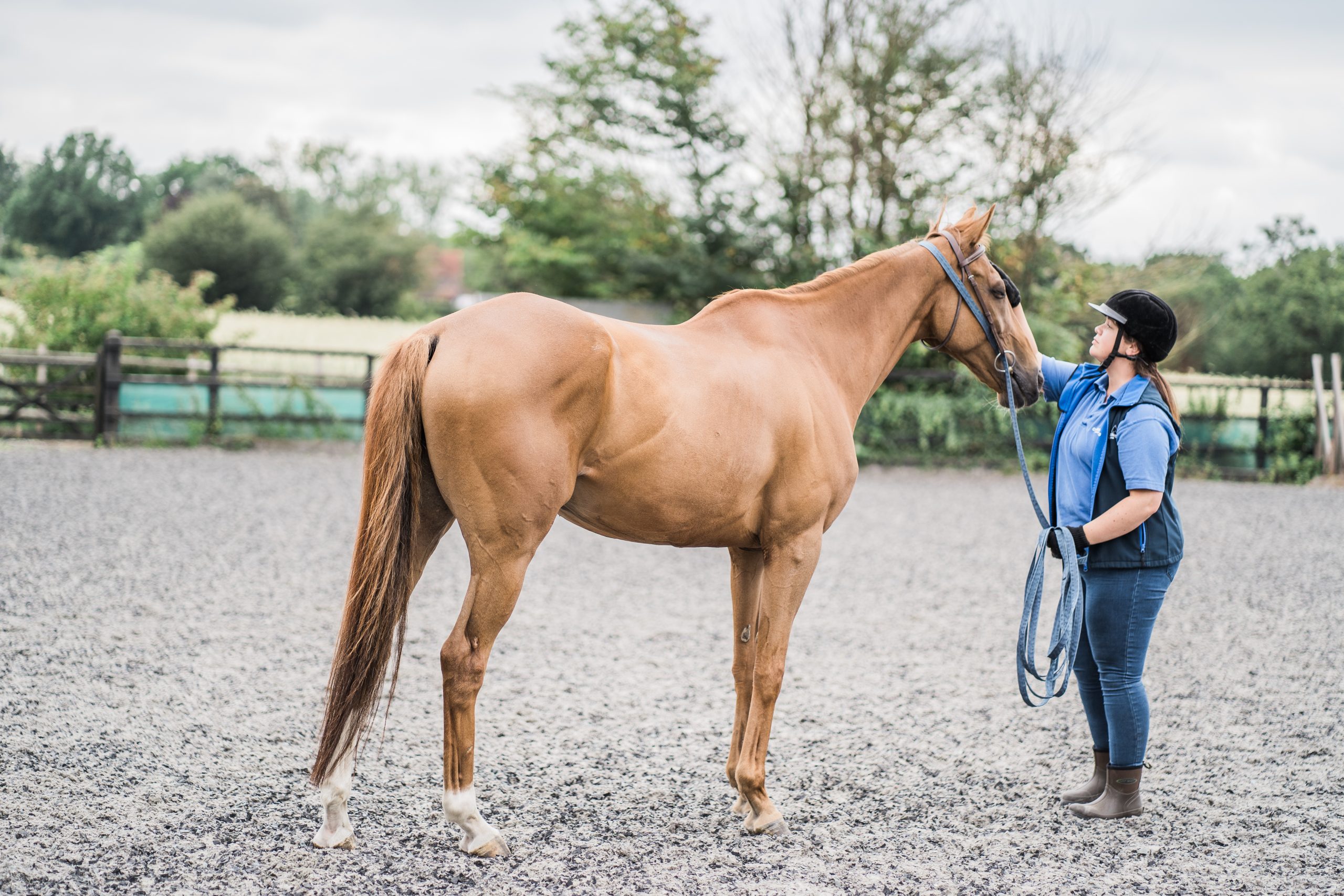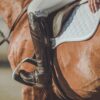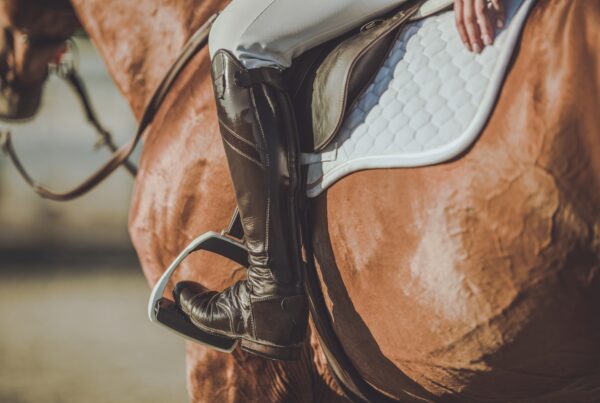There is no specific method to being good at training an equine.
We can all agree that “mastering” is a pretty strong word to describe learning the ropes. However, if any secrets could help a beginner, it would be patience. We believe that patience while training dressage horses is critical. This applies to riders, especially those who are still learning the scales of training equine.
This article will discuss what the term “scales” of training horses means, why it is so essential for riders to know about this, and how this is linked to dressage competitions.
Scales of Training Equine: What Should You Know?
The scales of training are a system of six building blocks, namely rhythm, suppleness, contact, impulsion, straightness, and collection. These points are followed and used by many trainers and riders worldwide when training horses. It’s also commonly known as the dressage pyramid of training or the dressage training scale. But, what is this “dressage”?
How Are Horses Trained For Dressage?
Dressage is like training a gymnast or a ballet dancer. It’s important to remember that you and the horse are athletes in the arena. Even more so, it’s crucial to note that the moment you get on a horse, both of you are a team. Thus, to better that relationship, dressage is necessary.
While the scales of training equine should be followed, we advise knowing why dressage exists in the first place.
In book terms, dressage is a way of training and riding your horse. It’s an Olympic discipline and is enjoyed internationally through the Grand Prix. However, like every other sport, it has different horse riding disciplines, from classical dressage to reining and eventing.
This requires the healthiest of the horses. So, make sure your horses are physically fit. Consult a professional equine vet before you try.
Benefits of Dressage & Competing
Frankly, dressage benefits both the psychological and physiology of the rider and the horse. For example, focusing on one discipline can help you master that discipline further. The more your discipline improves, the more your dressage horse improves i.e your jumping will only improve as your dressage discipline advances.
Competing in dressage will give you more opportunities to improve where you stand with your training as a rider. You will learn what a 10 of that movement looks like with each movement. So, it’s essential to know the details behind each movement and what a judge is looking for. Training a dressage horse will only progress when a certified rider looks at your training without being biassed.
However, while the journey to training a dressage horse continues, you should remember that you’re doing what you love and enjoying spending time with your equine no matter what discipline you choose to follow.
Training a dressage horse
Our aim in training a dressage horse is not to teach them to be a Grand Prix level, but rather to have the horse respond to the aids: right, left, go, back, and so on.
Not only will they develop skills as dressage horses, but they will also build strength, symmetry, and balance as they go. To ride safely, all horses need to have a basic understanding of the aids, and to achieve that, there has to be a continuous practice.
What are some Dressage Movements?
Ideally, the horse and rider work together to perform movements that look graceful and flawless to the spectator. This form of riding requires good communication between the two and a high level of athleticism.
The dressage test involves lateral movements that require the horse to move in a direction while maintaining the existing gait and balance. Then, there are movements where the horse must sit more and use its hind legs more. Just like any other sport, some horses will naturally find it easier than others. Some horses may find lengthening easier, while others find sitting easier. Even though some might be naturally good, it’s important to keep them practising under the scales of training equine.
Quick note take care of your horses: Clinical Symptoms, Treatment, & Prevention of Strangles In Horses
Levels of Competition
There are many levels where you can compete in dressage. The highest level is the Grand Prix level, a standard level at the Olympics and World Equestrian Games. The goal of competing is to improve your score, get an idea of where you stand with your training, and measure what you can improve based on the judge’s feedback.
Each level has dedicated movements. For example –
Intro: Walk, trot, canter, and circle 20 metres within the arena.
First Level: Circle 20 metres, trot 5-metre loop and give and take the reins.
Second Level: Introduce sitting trot movements, leg yields in trot, canter circle 15 metres, then canter circle again 10 metres, change lead through trot, rein back, and then lengthened strides in trot and canter.
Third Level: Half turn on haunches, collected trot and canter, medium trot, canter circle 10 metres, shoulder-in and travels, ending with the counter canter.
Fourth Level: Collected walk, trot in an 8-metre circle, extended walk and canter, half pirouette in the walk, trot half pass, and canter half pass.
Fifth Level: Canter in an 8-metre circle, single flying change, half volte 3-5 metre in collected canter, three flying changes every fourth stride.
How are the tests scored & what do judges typically look for during a Dressage test?
Both the horse and rider are collectively scored on a scale of 1-10. 10s are rare and usually considered “excellent” for a specific movement. Ideally, when someone scores 70% or over, they are considered “very good”, with 60-70% being “good”. Remember that 65% is the qualifying mark for entering national level competitions. If the horse and rider are consistently scoring over 65% at any level of dressage competition, then that indicates both the rider and horse are ready to move to the next level.
It is also important to remember that each level has a purpose, and it is this purpose that the judge is scoring you for. For example, in some dressage tests, the goal of Level 1 is to confirm that the horse has developed and maintains a rounded natural outline without any restriction and can move freely forward.
As you advance through the levels, the movement requirements increase progressively.
Quick Tip: Don’t ignore the hoofs. Chheck for Laminitis In Horses for the best performance.
Why Is It Important To Learn About The Scales?
When riders get on their horse, they control the speed, direction and outline. Often, we see enthusiastic riders wanting to learn how to get their horses under “control”. The word itself covers many factors, but the riders aren’t aware of it.
However, to understand the speed, direction and outline, riders must understand the mechanisms of training a dressage horse. Without gaining proper knowledge as to why they are learning a particular trait in the way they are, riders can waste a lot of time listening to the advice they don’t even understand. An awful scenario could be the rider acquiring bad habits without knowing, which could harm the horse.
That’s why riders must think and become self-sufficient whenever they’re on a horse. You’ll only become good at riding and training a dressage horse when you learn how to ride it and why you are riding that particular way. Understanding the reasons behind those exercises or positions will benefit you(the rider) and the horse.
A horse needs to be willing, and what’s more – feel safe under the rider’s weight, knowing that it’s not under any threat. The horse needs to feel that sense of trust. To achieve that, you need to learn the six scales of training equine horses.
Even though six points build the dressage pyramid of training, there are three phases they can be distributed into.
Note: Before you take your horse to the training field, learn the danger about Sycamore Seedlings In Horses Field.
Phase 1: Understanding Your Horse and Gaining Confidence
Rhythm, suppleness, and contact form the initial phase where you learn the horse’s traits and vice versa; the horse starts to get accustomed to the rider and his aids. This phase is usually used for warm-up in daily work.
This phase aims to secure a rhythm, choosing a basic pace that suits your horse. Make sure that you are pushing forward and have a steady and relaxed hand. When we say “forward”, we don’t mean speed. Instead, help the horse activate its hind legs.
While training a horse using the scales of training equine, flexibility or suppleness should always be on your mind. If you ever face a problem, always fall back on suppleness or relaxation exercises.
Remember to ride with light contact in this phase, so try not to get the horse on the bit only by using rein aids. However, if you keep pushing forward and have a discerning hand, the horse might look for the bit and contact itself.
Phase 2: Pushing Power
This phase involves versatile gymnastic work to build the horse’s flexibility and strength. This phase aims to make the horse put more effort from behind and step forward to the bit. So, suppleness, contact, impulsion, and straightness serve well in developing the hind legs’ thrust(driving power).
At this point, the horse develops more activity in its hindquarters and starts pushing the hind legs more under its core (centre of gravity). So, the horse can lift its back more and have more freedom while moving around. If you try to get your horse on the bit without thinking much about these connections, you could potentially block the activity of the hind legs and back. A proper contact has to involve a relaxed back and free movement of the horse.
To help the horse develop the correct muscles, you can let the horse stretch on a long rein and change it often. Never shorten the neck of the horse because then, it will cause more balance problems.
Riding transitions can help to create more impulsion. However, it should be fluent, and when shortening the rein, the horse should move its legs forward.
The need to develop pushing power is equally as crucial for show jumpers. An elastic and steady contact is necessary to ride a horse with control, especially when it comes to turns and distances. The rider will have to push the horse’s hind legs more under its centre of gravity. Only then will a good canter develop, further improving the jump.
Phase 3: Carrying Power of The Hind Legs
To develop the carrying power of the hind legs, the involvement of impulsion, straightness and collection is necessary. The horse should bear more weight over its hindquarters, which is compulsory for true elevation and collection.
Collection exercises are those exercises that make the hind legs take more weight. For example, an effective exercise is half halts. To further improve the carrying power of the horse, you can increase the forward push without letting the energy slip from your hands. Having a rein aid at the back of the horse can affect the hind legs, increasing the carrying power.
Tips: Vaccinate your horses timely to avoid unwanted situations.
The Pillars of Scales of Training Horses
The primary purpose of learning the dressage training scale is to promote a healthy relationship between the rider and their horse. The more these points are achieved, the healthier the relationship gets. Every dressage horse should be able to accomplish this, including show jumpers.
As discussed before, training the horse according to the scales of training equine horses will help strengthen the horse itself. Also, it will help when you try to make the horse do specific tasks without getting injured.
Any attempt to rush the process will only end in causing unnecessary problems. For example, forcefully pulling the horse’s head into an outline will only make the horse tense its back, resulting in losing the regularity of its gaits. In such cases, the horse will open its mouth to avoid contact. Furthermore, it will try to tilt its head to avoid the rider’s hand. Soon enough, you can expect to have an unhappy horse with a sore mouth and back under your care.
If you notice any of the signs, consider consulting a vet to make sure it’s not sick.
Rhythm(Energy + Tempo)
“Rhythm” refers to the strides in each gait or the regularity of the steps. Each stride should cover equal distances and be of equal duration. It should be noted that training dressage horses to walk should not be neglected.
The walk is a four-beat pace, where the front and hind legs form a “V” briefly. The legs must not be parallel, and another mistake to avoid is making the horse stiff on one side, which can cause the hind legs to make long, uneven steps.
A more improved walk is achievable by riding over poles.
The walk has three different parts:
- Medium Walk
- Collected Walk
- Extended Walk
Trotting is a two-beat pace, where the alternate diagonal legs(right hind and left foreleg and vice versa) are separated by a moment of suspension. You can understand how well a horse is trained by noticing how long the suspension between trotting is. Having a longer suspension means that the horse is stronger and more balanced. The horse will then push upwards instead of forward. Uneven low or high steps in trots indicates loss of rhythm.
There are five ways to distinguish the trot:
- Working trot
- Lengthening of trot strides
- Medium trot
- Extended trot
- Collected trot
The canter is a three-beat piece with a specific sequence to the footfall: left hind, alternate diagonal(left fore and right hind), right fore, a moment of suspension when all four feet are in the air before the next stride.
It’s important to keep these terminologies in mind when you’re following the scales of training equine.
Suppleness(Relaxation + Elasticity)
Suppleness equals that sense of trust we were talking about earlier. Only the rider can influence a relaxed horse, and anything is possible when a horse is comfortable with the rider. Although it’s not possible to define the moment when a horse begins to trust you, there are several signs:
- Forward neck stretch
- Regular chewing mouth
- Relaxed back
- Ear play
- Calm eyes
- Active and regular pace
- Occasional snorting
And, how would you know if a horse is NOT relaxed?
- Scared eyes
- Flared nostrils
- Tense neck muscles
- Neck unnaturally high
- Pacing uneven
- Laziness/Hurried gait
Knowing what kind of exercise calms down the horse depends on how well the horse is trained. Most of the time, these exercises are included in a novice test:
- Medium walk with no contact
- Long rein
- Working trot(rising)
- Changes and transitions of rein
- Riding on bend lines
- Working canter
- Leg yielding
- Letting the horse stretch
Contact (Acceptance of the Bit)
Contact is an elastic, light, and even connection between the rider’s hand and the horse’s mouth. Unless the horse seeks contact, the rider shouldn’t force it.
A beginner might find it tough to comprehend that it is much easier to get a horse on your aids by allowing the horse to move freely instead of pulling. If the contact is correct, the horse will be on the bit. One of the primary aims of following the scales of training equine is to build a healthy relationship with the horse. Forcing the dressage horse to learn discipline won’t help anyone.
However, if you use too much hand, these mistakes are prone to happen:
- The horse avoids contact with your hand by going above the bit.
- The horse will go against the bit; you’ll notice this by looking at the line from the forehead to the nose, which will be way in front of the vertical.
- The horse starts avoiding the rider’s rein aids by going behind the bit, meaning the line from the forehead to the nose is behind the vertical.
- The poll is the highest point, but the horse’s head is behind the vertical, meaning the line from the forehead to the nose is behind the vertical.
- The horse leans on the reins, meaning it’s not carrying enough weight with its hind legs but depending on the reins and rider’s hands.
- The poll is no longer the highest point anymore, but rather the space between the 3rd and 4th vertebrae.
Impulsion (Increased Thrust & Energy)
Impulsion is, as the parenthesis suggests, all about thrust and energy. These two are results of training dressage horses well, where the activity from the behind and suppleness adds to the horse’s natural paces.
When the horse is trained enough, it will have more balance. As a result, it will actively push forward with its hind legs. Given that it’s a good contact when a relaxed horse is being pushed forward with reins, the time spent off the ground will increase, and the horse will push off more. However, if the horse rushes too much, the time in the air will shorten. That doesn’t mean the rhythm will be ruined. The horse could still be in good rhythm, but impulsion will be limited.
Straightness (Better Balance & Alignment)
Straightness refers to the horse’s weight distribution on both sides of the body. Straightness occurs when a horse steps with its hind legs into the same track as the front legs. This point is necessary to mark the bodyweight distribution throughout the test.
Almost all horses are born crooked!
However, there is a challenge that most riders must face, which is natural crookedness. This means that the horse is much narrower in the front than the back, which causes uneven weight distribution on the horse’s leg. Horses with natural crookedness will walk with their right hind foot to the right of the front foot’s track. The right hind leg has to push, making the left hind leg bend more. Thus, the front four will be under more strain than usual.
Collection (Self Carriage, Increased Engagement Between the Horse & Rider, Lightness of Forehead)
When it comes to the collection, the hind legs are supposed to take more weight while at the same time, the hip, hock, and knee joints have to bend and step further under the core (centre of gravity) of the horse. The front legs have less to carry, resulting in more free movement. Both the rider and spectator can feel like the horse is moving uphill.
Final Words
Now that you know all about dressage and the scales of training equine, there is one thing you should remember: you’re doing what you love and spending time learning more about your horse. If you’ve come to the conclusion that dressage isn’t for you at any point during your training, try understanding what dressage is actually about. It can help you enjoy your riding more if you have a strong relationship with your horse.
Want to learn more about horses? Check out our other blogs!








